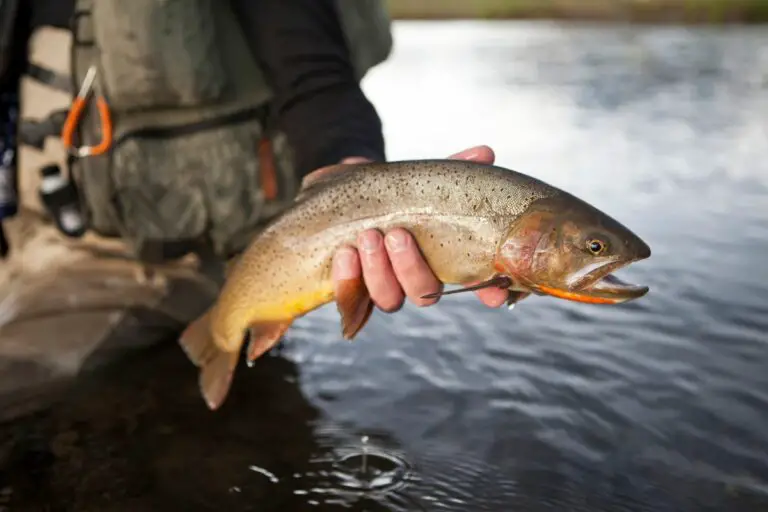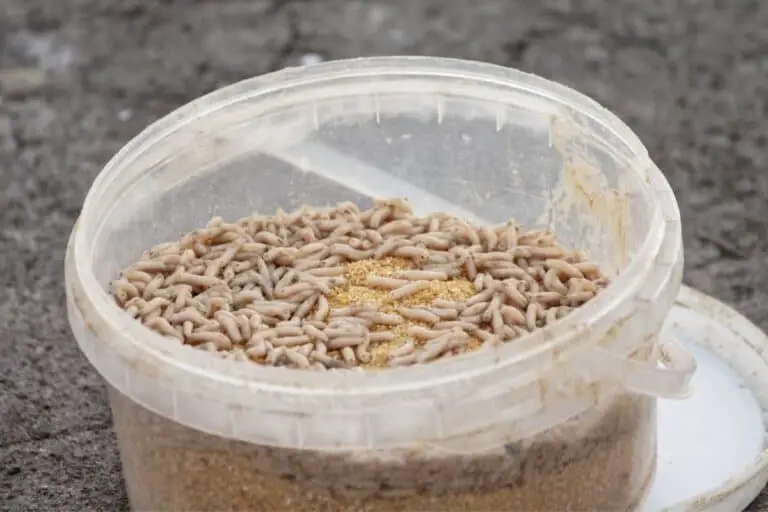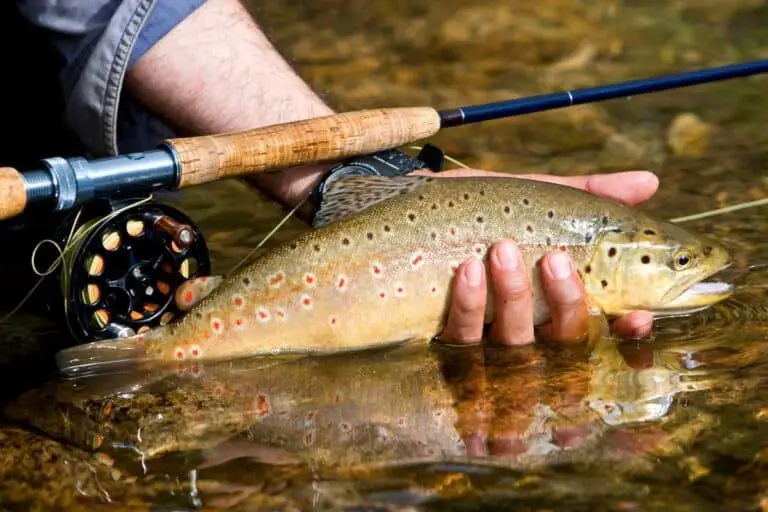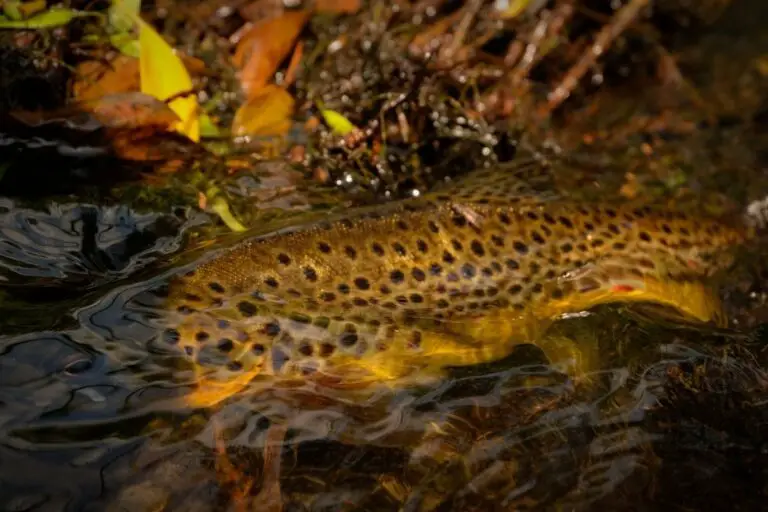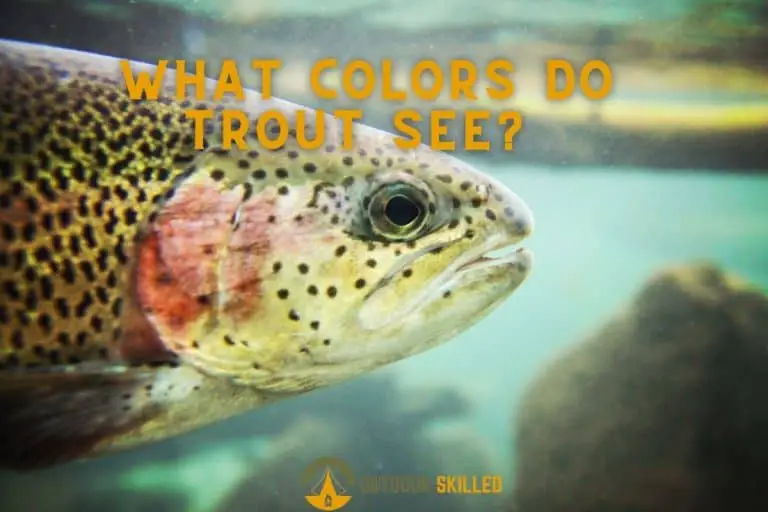Bass VS Trout Fishing – Which Fish to Target?
Bass and trout are two of the most popular species that many anglers enjoy targeting. Understanding the difference between both of them will help adjust your fishing technique accordingly and improve your chances of catching them.
Here’s a quick comparison between the basic characteristics of bass vs trout:
| Bass | Trout |
|---|---|
| They require heavier tackle and larger lures | They require lighter tackle and smaller lures |
| They put up more of a fight | They don’t put up a lot of fight |
| They can be aggressive when biting the lures | They can be picky and elusive when biting the lures |
| They’re easier to catch | They’re require more skill to catch |
| They can be caught all year long but more often during their spawning season. | They can be caught the most during late spring and fall. |
| They prefer both cold and warm water | They prefer cold water |
| They taste good but not as good as trout | They taste better than bass |
| They’re bigger than trout and have less bones in their body | They’re smaller than trout and have more bones in their body |
| Popular types are largemouth bass and smallmouth bass | Popular types include Rainbow, Steelhead, Cutthroat, Brown, Brook, Lake Trout, and Speckled Trout |
Keep reading for a complete guide that covers the key differences between bass and trout and the best gear and techniques to target them.
Table of Contents
The Basics of Bass and Trout
Before we dig deep into how to choose which fish to target, we need to cover some basics first about Bass and Trout and how they differ from one another.
What You Need to Know About Bass

In order to be more successful in catching bass you need to learn about the different types of bass, where to find them and how they feed.
What Are the Common Types of Bass?
There are several different types of bass. This includes striped bass, peacock bass, sea bass and many more. The most popular among anglers are the largemouth bass and smallmouth bass.
Here’s a quick comparison between some key characteristics of largemouth bass and smallmouth bass:
| Largemouth Bass | Smallmouth Bass |
|---|---|
| Their dorsal fin has a break in it which makes it look like two separate fins on the top of their head. | Their dorsal fin is one continuous piece with no breaks. |
| Their jawline is longer and extends past their eyes. | They have a smaller mouth and their upper jawline doesn’t extend past their eyes. |
| They’re green in color and have horizontal stripes and spots on their body. | They’re brown in color and have vertical stripes on their body. |
| They generally prefer warm water and slow currents. | They generally prefer cold water and fast currents. |
| The biggest largemouth bass can weigh almost 22 pounds. | The biggest smallmouth bass can weigh about 11 pounds. |
| They are not selective and will generally eat anything. They have been known to eat shad, bluegill, crawdads, worms, lizards, snakes, and even small turtles. | They’re more limited with what they eat because of their small mouths. They have been known to eat small shiners, crawfish, sunfish, perch, worms, and minnows. |
Where Can You Find Bass?
The key to success when you’re targeting bass is knowing where to target them. Largemouth can be found all across the US. They are more commonly found in the south where the water is warmer, however, they can also be caught in the north where the water is cooler.
They can be found in lakes or rivers; they can also be found in deep or shallow water depending on the time of year. During the summer, largemouth bass tends to prefer shallow waters.
If you’re fishing for largemouth on a lake, you’re likely to find them more near cover. This includes logs, rocks, brush, and weed beds.
If you’re fishing for largemouth on a river, you’re also likely to find them near cover and shelter mostly in calm patches of water. They tend to prefer slow currents to faster currents as this allows them to preserve energy by bringing their food to them without having to fight against the current.
Smallmouth can also be found in many areas across the US. However, they mostly prefer cooler water in the north. They can be found in lakes or rivers but unlike largemouth they prefer fast currents.
They are more likely to be found near the edges around large rocks, stumps, and weed beds as they typically hunt on the edges of cover instead of going straight in.
Fishing for Bass in muddy and unclear waters can be challenging, but you can still be successful. Check out my guide on fishing for bass in cold and muddy waters here.
When Is the Best Time to Fish for Bass?
You can generally catch largemouth bass all year long. The most ideal time of the day to target them is in the early morning or dusk as they tend to move towards the shoreline.
Smallmouth bass, on the other hand, can be caught the most during their spawning season. So, the ideal time to target them is usually in late May or early June.
If you are going fishing in cold weather, check out my guide on cold water Bass fishing here as it can be quite helpful for you.
What You Need to Know About Trout

Trout is one of the most popular fish targeted by anglers. They’re known to be less aggressive than bass, however, they’re still hard fighters and require a lot of skill to catch.
Trout are very picky eaters and they usually feed on insect larva, small baitfish, and crawfish. They’re smaller than bass fish and averagely weigh up to 8 pounds.
What Are the Common Types of Trout?
There are several types of trout. The most popular among anglers in the US are Rainbow, Steelhead, Cutthroat, Brown, Brook, Lake Trout, and Speckled Trout.
While these species may look similar from a distance, each of them have very distinctive markings that can make it easier to tell them apart.
Here are the key features that will help you identify each type of trout:
| Trout Species | Identifying Features |
|---|---|
| Rainbow Trout | Their body is silver and rainbow-colored along the side. They spend their entire life in freshwater. |
| Steelhead Trout | They’re also silver and rainbow colored along their side, however, they spend the majority of their life in saltwater. |
| Cutthroat Trout | They’re brown colored with an orange-red colored gill plate |
| Brown Trout | They’re brown colored with a yellowish belly. They’re covered with black spots from head to tail. |
| Brook Trout | They’re brown colored with a red belly. They’re covered with yellow spots. |
| Lake Trout | Their body is a dark brown and covered with yellow spots. They grow larger than all other trout species and they can even be larger than bass. |
| Speckled Trout | They’re silver colored with a white belly. They are covered in black spots from the beginning of their gill plate to the tip of their tail. They also prefer saltwater. |
Where to Find Trout?
Trout can generally be found in streams, rivers, lakes, and the ocean. They’re mostly freshwater fish with the exception of steelhead and speckled trout which prefer saltwater.
Most types of trout can only survive in cold water. If the water temperature gets too warm they tend to move to a cooler area, otherwise they might die off.
Trout are more likely to be found in deeper holes in cold water streams and rivers. They tend to stay close to current breaks such as rocks and trees to wait for their prey.
If you are new to Trout fishing, you will definitely find my guide on Trout Fishing Basics here quite useful, so check it out whenever possible.
When Is the Best Time to Fish for Trout?
The best time to fish for trout would be during late spring and fall when water temperatures are cooler. Trout are the most active when they’re feeding which is more common when the water temperature is between 34 and 67 degrees Fahrenheit.
Trout fishing in Foggy weather could be difficult, though. You can learn how to still be successful in catching trout in foggy weather here.
The Kind of Gear Needed to Target Bass and Trout
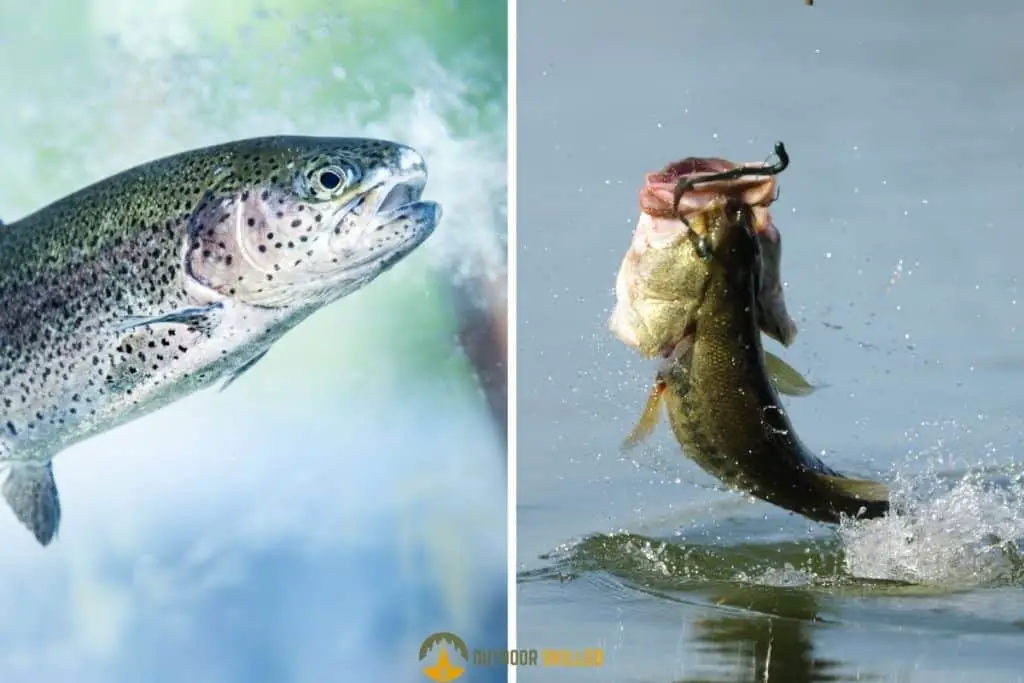
What Kind of Gear Do You Need to Catch Bass?
Largemouth bass generally requires heavy tackle. The fishing rod and reel and line need to be strong because largemouth bass can be very large in size.
You can use the same tackle when fishing for smallmouth. Although smallmouth bass are smaller in size than largemouth bass, they can still fight hard. So you’ll also be needing a strong rod, reel, and line.
The most recommended set-up is a medium-heavy powered rod with fast action. You can pair it with a spinning reel and spool the reel with a braided line with 8-pound line test.
You will also need to use larger hooks because hooks that are too small can bend or break. The ideal hook size when fishing for bass is between sizes 4 to 6/0.
For specific recommendations that will get you results without breaking your wallet, check out this guide to the best Bass Fishing Rods and this guide on the best Bass Fishing Lines here as well.
What Kind of Lures Do You Need to Catch Bass?
The most common lures to catch bass include spinnerbaits, jigs, vibrating jigs, soft plastics, crankbaits, jerkbaits, and top water lures.
Spinnerbaits, vibrating jigs, and topwater lures are the best with largemouth bass. While crankbaits and soft plastics are the best with smallmouth.
If you’re using a spinning reel, soft plastics and spinnerbaits will be effective. You can check the best spinning reels for bass here.
What Kind of Gear Do You Need to Catch Trout?
The kind of gear you use to target trout will mostly depend on which type you’re targeting and your fishing technique.
One of the most popular techniques to fish for trout is fly fishing requires a setup that includes a fly rod, fly reel and fly line. You can purchase a fly fishing combo kit that includes a fly rod, reel, line, and flies. Some combos even include a rod case and a fly box as well. These kits are ideal for beginners to get them started with fly fishing. You can find the best fly fishing lines here.
While techniques like trolling and jigging generally require stronger rods and reels. The most recommended set-up to successfully fish for trout is a light action rod paired with a spinning reel.
When it comes to the line, it’s best to go for a lighter line such as a braided line of 4 to 6-pound line test. It’s also best to include a fluorocarbon leader.
Smaller hooks are often best for trout because they will be able to see larger hooks if the water is clear enough. The ideal hook size for trout is between 8 to 14 is going to be best. It’s also recommended to go for barbless hooks.
For more specific recommendations, I highly recommend checking out my guides on the best lines for Trout Fishing here, the best trout fishing rods for the money here, and the best Trout Spinning reels here as well.
What Kind of Lures Do You Need to Catch Trout?
Generally, the most recommended lures to use for trout fishing are in-line spinners, spoons, salmon eggs, and dough bait. When it comes to lake trout, in particular, Jigs are the best for lake trout. While top water lures are the best for targeting speckled trout.
I do have a separate guide on fishing lake trout here which has a lot more information and pro tips to help you be more successful catching lake trout, even when fishing from shore.
The Key Differences Between Bass and Trout Fishing
There are a lot of differences between the two fish when it comes to how they fight, how they bite the lure, and overall the techniques used to catch them.
Let’s take a look at these key differences in more detail.
Bass Vs Trout: Fighting
Bass are known to fight a lot harder than trout. They are larger in size and require heavier tackle. However, trout fish can still put up a good fight.
Both fish fight differently. The way bass fight is by going on longer runs and shaking their heads back and forth at times. Trout, on the other hand, go on shorter runs while also shaking their heads back and forth.
Bass Vs Trout: Biting The Lure
The ways bass and trout attack lures are completely different.
Trout can be pickier than bass. They are known to be stealthy and subtle. They can also be line shy so they will usually peck and nibble at the bait or lure while barely disturbing the water.
Bass on the other hand are far more aggressive in the way they attack the lure. They will typically slam the hook and take the bait, which gives you a chance to set the hook hard into its mouth. You need to wait until you feel the bass completely take the lure before setting the hook. This is mostly because bass open their mouths and inhale water when they take the lure so, if you set the hook too early the bass won’t have enough chance to bite down.
In some situations, bass might grab the lure lightly but for the most part they are a hard hitting fish.
Bass Vs Trout: Fishing Techniques
You can generally use the same techniques when catching both bass and trout. The main difference is that you need heavier gear and larger lures to catch bass. Wherewith trout you need lighter gear and smaller lures.
Both trout and bass can be caught using techniques like trolling, jigging, and fly fishing. Meanwhile, techniques like flipping and pitching are more successful when you’re only targeting bass. That is because bass prefers densely crowded areas of the water.
You need to keep in mind that there can be slight differences between fly fishing for trout and fly fishing for bass. The most important factor when fishing for bass is to know where to target. With trout, the most important factor is to learn how to use stealth to your advantage and to keep your distance to avoid spooking the fish.
Another thing to keep in mind is that trout fishing depends on your ability to spot the trout. It involves sight fishing which is when you slowly approach clear water and spot the fish before you throw your line in. So, when you’re fishing for trout, you need to throw your line beyond the fish and then allow the bait to naturally drift past it.
Which of Them Is Harder to Catch?
Trout are generally harder to catch than bass even though bass fish are known to fight harder. That is because trout are picky and easy to spook. You might only have one chance to catch trout. If you miss that chance and the trout gets spooked, they will swim away. So, they require more skill and patience than bass.
Bass, on the other hand, are considered more fun to catch, which makes them ideal for beginners to target. That is because they are easier to find and they will bite almost all kinds of lure.
Both bass and trout have their advantages and disadvantages. The most important thing is to know which techniques to use when targeting either of them.
Which of Them Tastes Better?
Trout fish generally taste better because they live in clean water and feed on the surface which makes their meat taste a lot more fresh. Bass, on the other hand, sometimes feed at the bottom of the water and can get which leads to them having a murky-taste similar to catfish.
While trout tastes better, bass is a lot easier to filet. That is because bass have less bones in their meat to pick out.
So, if you intend to filet the fish, it’s best to go for bass to get the hang of it. There are all kinds of recipes for both bass and trout. It’s better to try out both fish and decide which one you like better.
Is It Better to Release Bass and Trout Fish, or to Eat Them?
A lot of anglers practice a catch and release philosophy when it comes to bass and trout fishing. That is to preserve the fish population as both species are very popular game fish. If most anglers kill the bass and trout they catch, it would affect their populations significantly.
However, it wouldn’t cause a problem to take a few of the smaller catches to cook. Releasing the bigger catches is the right thing to do. That is because bigger catches are usually female breeders that produce thousands of eggs every spawning season. Also bigger catches usually taste much worse than the smaller ones.
Conclusion on Trout VS Bass
To sum it all up, when it comes to the fish you choose to target, whether it’s trout or bass, your choice will always depend on your preference, what style of fishing you’re most skilled at and what you intend to do with the fish. So, if you want more of a challenge and a better-tasting fish, then it’s best to go for trout fishing. But if you’re looking for an easier and larger catch, bass fishing will be much more suitable for you.
Related Questions
What is Pitching and Flipping?
Pitching and flipping are fishing techniques that are used to target bass fish. Flipping is basically letting out more line than the length of the rod and feeding the line back through the guides while you drop and lift the rod. Pitching is when you release the lure from your hand as you let the line go through the guides while you’re also thumbing the spool.
What Is Fly Fishing?
Fly Fishing is a fishing technique where the bait is presented to the fish as if a bug or an invertebrate has landed on the top of the water or slightly under the surface. It is often done while wading into the water instead of fishing from a boat and you can also do it from the shore. It’s the most popular technique for catching trout fish.
What Are the Differences Between Fly Lines for Bass and Trout?
Fly lines that are meant for bass have a short taper which makes all the weight concentrated towards the front-end of the line. In contrast, fly lines that are meant for trout lines, will typically have long tapers. That is because they are designed to present smaller flies.
What Are the Health Benefits of Trout and Bass?
Trout fish have many health benefits such as being low in calories and high in protein. Trout are a rich source of omega-3 fatty acids, B vitamins (thiamin, riboflavin, and niacin), vitamin D, phosphorus, and iron. They are also a good dietary source of iodine. Bass, on the other hand, are rich in omega-3s and protein. They are also a good source of manganese, phosphorus, and vitamin B12.
What Is the Best Way to Cook Largemouth Bass?
The best way to cook largemouth bass is by fileting them. First you need to cut off the filets and pull off the skin then you can either deep fry them or grill them. Another great way to cook largemouth bass is to bake them in aluminum foil. After adding some seasoning such as crushed garlic and lemon juice, you can let them stew until their meat starts to flake.
Helpful Resources
The Orvis Fly-Fishing Guide by Tom Rosenbauer (which you can also check on Amazon here)
Big Book of Bass: Strategies for Catching Largemouth and Smallmouth – ( you can check this book on Amazon here)
Trout Fishing in America by Richard Brautigan (you can check this book on Amazon here)
If you like this article, please share it or pin it, you can find the share buttons below. We will really appreciate it ❤️

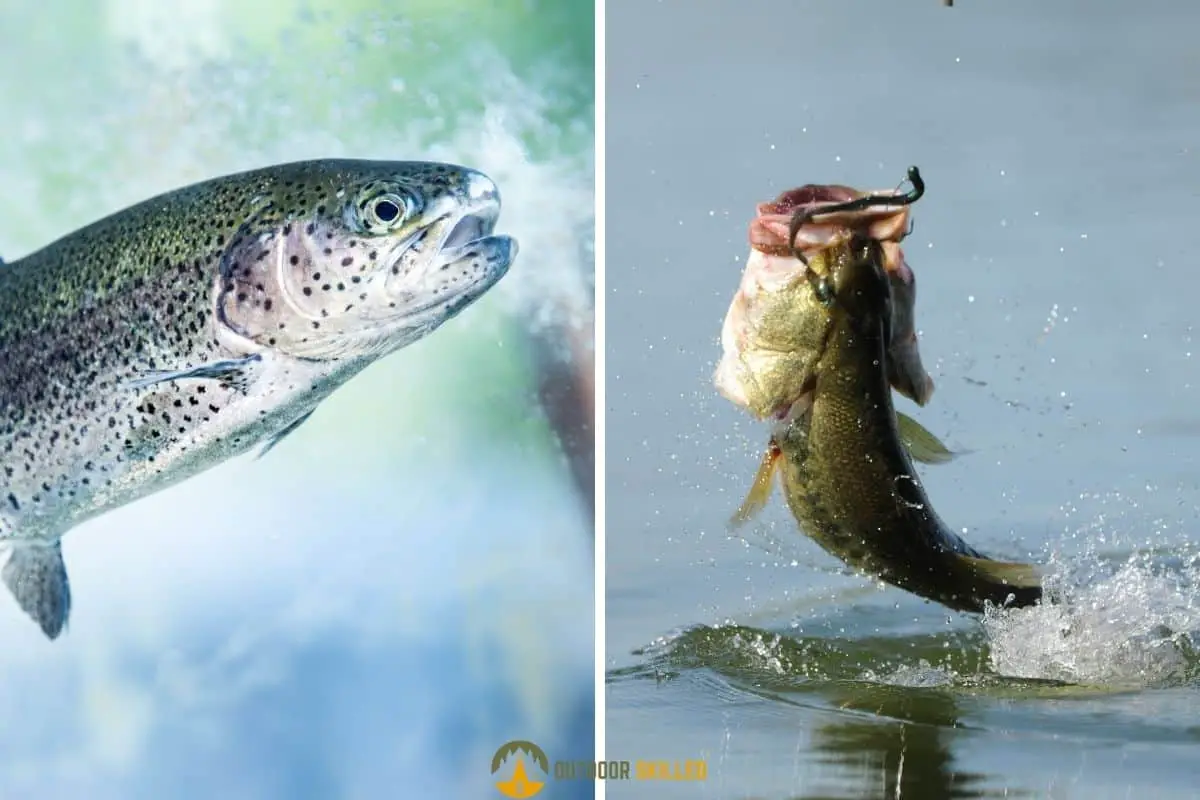
![How to Keep Trout Fresh After Catching [For As Long As Possible]](https://outdoorskilled.com/wp-content/uploads/2021/11/fresh-trout-768x512.jpeg)
